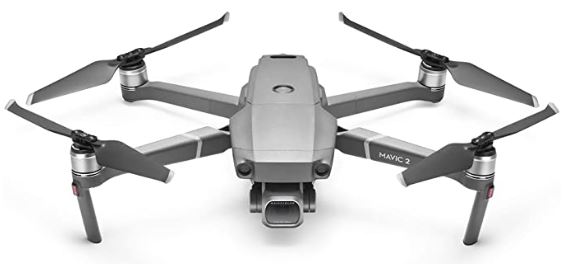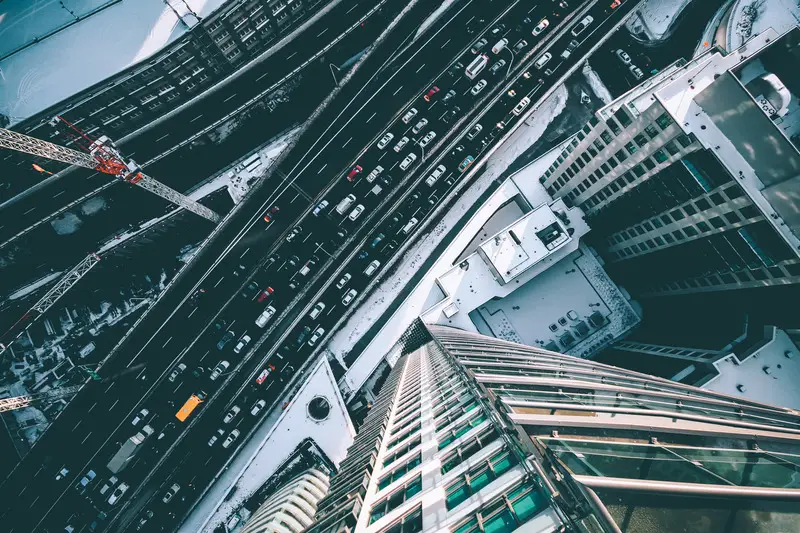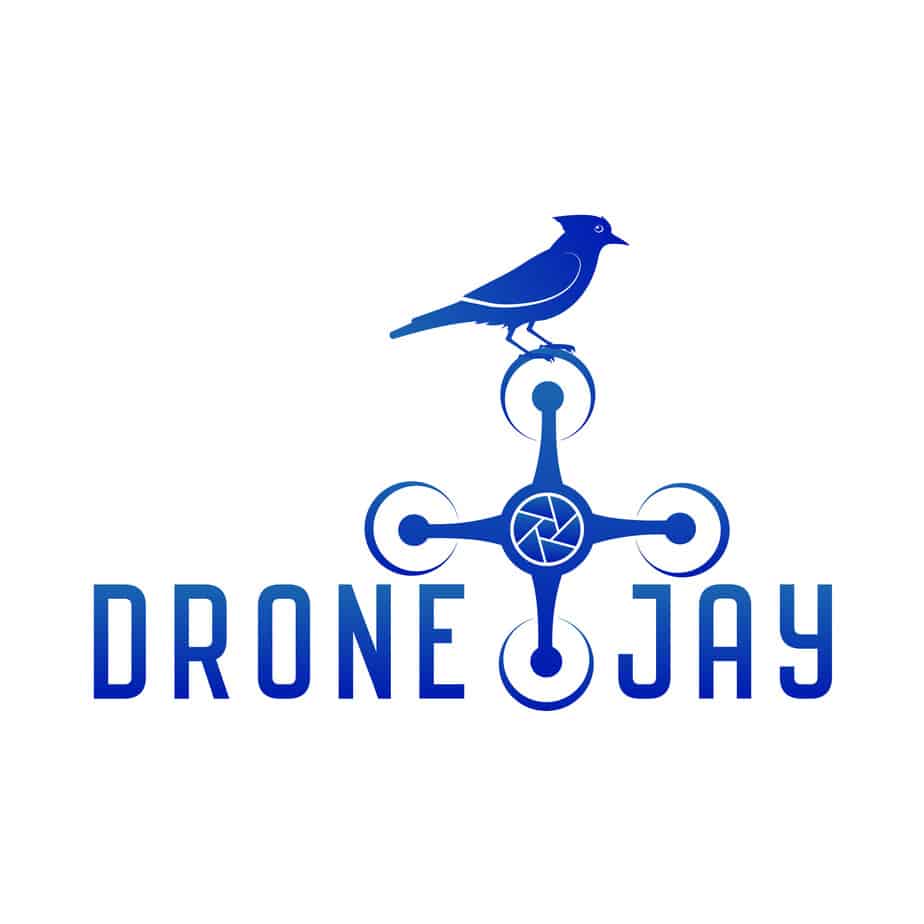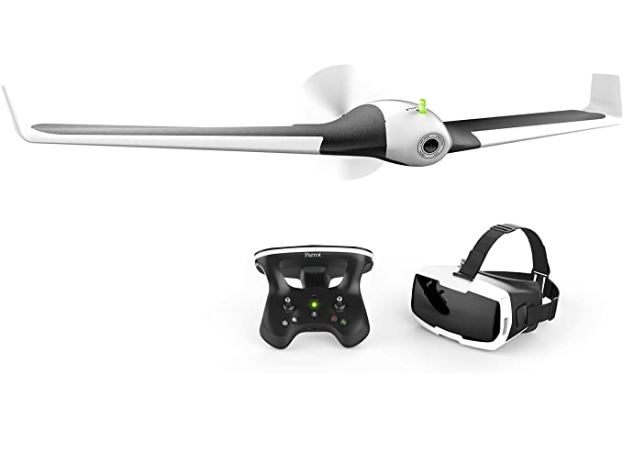In this day and age, we’re seeing some unprecedented advancements in the field of surveillance. Drone surveillance, namely, is increasingly receiving attention as one of the most efficient and cost-effective solutions for surveillance operations.
So, how can drones improve security? Drones improve security by providing an overhead angle that diminishes blind spots, covering more surface area, entering hostile environments, and providing the info back to the user.
Moreover, we’ll be looking at some points where drone surveillance excels over traditional surveillance methods. Lastly, we’ll mention some companies that are using drones for their own security operations.
Let’s dive in!
Applications of Drones in Security
The security industry comprises many fields with differing criteria. Let’s take a look at some of the most common security applications at which drones are used.
Line Monitoring and Fixed-Wing Drones
Line monitoring is essentially securing places like highways, borders, and coastal lines.
Fixed-wing drones are needed to perform these kinds of security operations. They’re faster and fly much further than multi-rotor drones, which we’ll get to later on.
Border guards can now monitor the whole line of sight with a single fixed-wing UAV, which will provide highly detailed feedback should any event unfold. Drones can also help against poachers in animal trafficking or smuggling.
Site Monitoring and Multi-Rotor Drones
Site monitoring will require multi-rotor drones. Multi-rotor drones are UAVs that sport more than a couple of rotors with propellers. These propellers are what enable the drone to ascend using the generated lift.
By changing the speed of some of the rotors, the difference in generated thrust causes the drone to hover in the intended direction.
Multi-rotor drones are known for their excellent maneuverability. They’ll accurately identify intruders since they can easily follow their targets while still covering a large surface area.

Companies that start using drones for monitoring sites can greatly reduce theft rates. They can also monitor their employees to verify they’re all at the top of their game.
Most of these industries and companies already have lot of security measures. Drones can work hand in hand with the existing security measures. For example, if a motion sensor goes off by a certain area and/or the camera there only caught a glimpse. A drone can be flown over and give the security guards useful info before they intervene.
Oil and Gas Surveillance
As oil and gas become more and more of an expensive commodity, theft and sabotage acts are also becoming more apparent.
Drones have been used in areas where pipeline sabotage was reported. One high performing security UAV should suffice to monitor the perimeter for any malicious acts. It can also be repositioned to guard a heavy vessel while it loads oil and gas offshore.
Securing Events
Drones are also being used for large scale events to effectively monitor spectators and the overall event’s security infrastructure.
UAVs can cover vehicles, vast landscapes, or even go up several floors. Aside from crowd control, they can also be used to guide people in case of an emergency. This is especially helpful in large crowds that need to be following a specific safety protocol.
In addition to this, drones can provide valuable information that allows for analytical planning, risk management, and constructing security procedures
Finally, in case of an emergency, a flying drone will be the first to assess the scale of the incident. This provides critical information to the authorities in order to respond appropriately.
Managing Traffic
Recently, managing traffic has started to get its own fair share of drones. Drones are incredible for their detailed descriptions of road network performance, car plates, and drivers’ facial data.
Data is collected on a daily basis and is used to build a vast library of road data. Traffic monitoring organizations are now opting in for drones instead of helicopters, which comes with hefty maintenance costs and limited surveillance capabilities.

The one shining advantage that drones have over helicopters is autonomous flight. This enables the drones to automatically and repeatedly fly along a specific predetermined route to gather information.
Securing SWAT Teams
SWAT stands for the Special Weapons and Tactics team, and usually, they don’t mess around.
For such an elite tactical squad, a high-risk operation might be completely jeopardized in the case that their cover was blown. Helicopters are out of the question, and aerial assistance used to be very limited.
Nowadays, tactical implementation is aided heavily by security drones. They’re much stealthier and can cover very strategic areas that would help with the effective deployment of SWAT teams.
Drones will also significantly increase response time since they’re broadcasting real-time feed to the specialized drone team. Essentially, this leads to safer environments for the SWAT team and a lower likelihood of civilian casualties.
Traditional Surveillance vs. Drone Surveillance
There are a lot of advantages that security UAVs have over the conventional methods of surveillance. Let’s take a look at some of them.
Cutting Expenses
This involves both the upfront cost of the unit and running costs. Traditional aerial methods of surveillance are significantly more expensive than drones. Since they’re usually autonomous, pilots aren’t needed. Instead, UAVs specialists control the drone remotely for data collection, which greatly decreases operating costs.
Diminishing Blind Spots
Drones are designed in a way to offer exceptional maneuverability. Their small form factor also allows them to monitor places not previously accessible by traditional security cameras.
Covering More Surface Area
It goes without saying that the higher your drone will go, the larger the area of surveillance will be.
Security cameras are limited to one field of view, with limited turning points and a fixed height. Drones can cover as much ground as a security helicopter, at around 1/50 the size.
Safer in Hostile Events
CCTVs and traditional security cameras can definitely capture and identify criminals, but nothing will do it in real-time like a security drone.
This allows for incredibly fast response times, essentially giving the upper hand to the dispatch units on route.
Harder to Get Detected
Forget about helicopter engines, have you heard the sound of a drone flying 400 ft above your head before? Neither did we!
The design of a security drone usually features brushless motors that emit little to no sound. It also has vibration dampening, props designed to cut through the air silently, and other sound-suppression elements that make it one of the quietest security tools available.
This clear advantage provides responders with real-time information without being detected, so they can have more room to plan before charging in.
Active Tracking
Complimenting its stealthy profile, drones also come with software that enables active tracking of targets in real-time and without any external setups.
This is used prior to operations to gather identity profiles and during procedures to maximize the tactical response efficacy.
Can Land and Takeoff from Anywhere
A helicopter would be worthless without a helipad and enough fuel for the whole operation. Security UAVs steal the spotlight with effortless vertical takeoff and landing abilities, independent of any runways.
This allows for faster response to emergencies that may unfold. Drones will be accessible almost anywhere and anytime.
Drawbacks
To be fair drones do have a few drawbacks. Most Multi-rotor drones can only track or provide surveillance info for 30 min or so at a time before they need to come down and either swap batteries or get charged.
They are quiet at a certain elevation, but if the drone is flown lower to the ground, it can get quite noisy.
FAA will require waivers and certifications for flying over people, in the night, and beyond visual line of sight. All of which are highly likely for a drone to do in a surveillance situation.
Extreme temperatures and weather can ground drones when they are most needed.
Companies Using Drones for Security
Here are some of the biggest companies that swapped traditional surveillance with the recent drone technology.
The US Army
As of 2014, the US military held the record for most security UAVs being used.
The security role of drones in the military is now growing exponentially. It’s being used for gathering intelligence and for performing surveillance and reconnaissance operations.
A lot of other countries are following the tracks of the United States, with lots of the standard RQ-11 Raven drones being sold to military establishments overseas.
One of the coolest Army drones is the Black Hornet. It weighs just over 1 oz and is only 6″ long. It is basically completely silent and comes in a compact carrying case. This $80k drone allows soldiers to deploy it when they need to check an area out. It streams 1080HD video back to the display screen. The transmitter is designed to be used with one hand allowing the soldier to keep his other hand wrapped around his gun.
The British Security Industry Association (BSIA)
The BSIA is perhaps one of the best examples in this regard. Reporting hundreds of security drones being used alongside roughly 6 million CCTVs with rotors is incredible. There are plans to further increase the number of active security drones operating within the kingdom. Check out the nice report they put together which has charts, statistics and more…
https://directory.ifsecglobal.com/Drone%20Report%202017-file076075.pdf
Shell Oil Refinery
Shell, the British-Dutch giant, is also among the companies that started utilizing drones for surveillance and inspections.
Their goal is to increase their capacity to detect gas leaks, corrosions, or out-of-the-ordinary heat signatures. They also claim this drone surveillance program could help sustain the presence of wildlife and road conditions in their field of operation.Check out the cheesy video below show casing their innovation.
KnightScope
KnightScope is a more recent startup company that makes use of robots that wheel across the ground for security. Like a larger Star-Wars R2-D2 these bots are made directly for stopping crime. Check out their article boasting the different types of crime their bot has stopped!
In Conclusion
To answer the question, “how can drones improve security?” We can say that drones will provide you with superior strategic advantages, a higher field of view, and precise information, all in real-time.
Traditional surveillance methods just can’t keep up with the technological advancement of UAVs. Soon enough, we wouldn’t be surprised to start seeing dozens or even hundreds of drones in our normal day-to-day lives.


